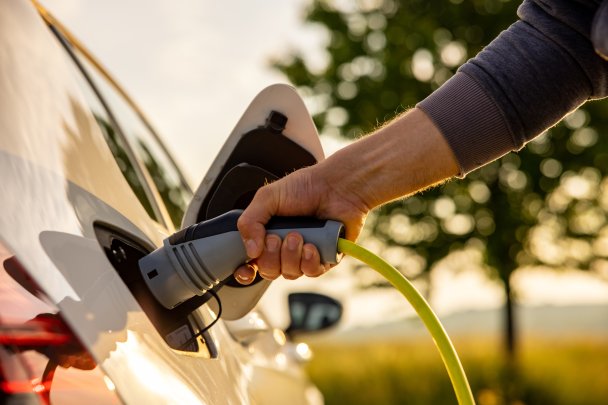By John Bozzella
While we’re all waiting for EPA’s final greenhouse gas and criteria pollutant rules for light-duty vehicles covering model years 2027-2032…
The Energy Department is just out with changes to its less well-known (but hugely significant) petroleum equivalency factor rule.
Quick explainer on ‘PEF.’
It’s how the ‘fuel economy’ of an EV is determined for the Transportation Department’s Corporate Average Fuel Economy (CAFE) rule. CAFE is calculated by averaging the fuel economy of all vehicles across a manufacturer’s product line.
You’ve heard me say vehicle tailpipes are regulated by multiple federal agencies with at least four different rules. Here we are…
Here’s what to know:
Today the PEF formula equates a pure battery electric vehicle (BEV) with a gas-powered car that gets about 300 miles per gallon. That’s really high fuel economy. An EV doesn’t use gas, so that makes sense. (In truth, a BEV’s fuel economy is actually… infinity).
But the Energy Department proposed changing the PEF formula, slashing the equivalent fuel economy rating of a BEV by 72 percent in 2027.
That would have – for the purposes of a CAFE rating – said a battery electric vehicle is not that much more efficient than the most efficient internal combustion engine vehicle out there.
Really? The EV doesn’t use gas.
So changing PEF (we said) will perversely disincentivize the production of battery electric vehicles and further misalign the greenhouse gas and CAFE rules, something that could result in manufacturers paying billions of dollars in CAFE civil penalties – even if they meet EPA’s stricter emissions standards.
Does your head hurt?
Anyway, it looks like the administration changed course and adjustments to PEF will instead phase in over a number of years. That’s positive.
What we still don’t have is the actual CAFE rule. Maybe another two months?
The CAFE rule is obviously closely related to EPA’s plan. Lowering greenhouse gas emissions improves fuel economy… and vice versa.
CAFE is a major question mark because these regulations only work… if they work together.
By the way, my sense is that agency coordination is starting to happen across the government.
Final point on fuel economy.
I’m not sure there’s a need for CAFE in an electric vehicle world.
(The weirdness of PEF is exhibit A).
CAFE is an artifact of the 1970s – a policy to promote conservation and energy independence and make internal combustion vehicles more efficient.
Here’s the rub. EVs on the road today don't combust anything. They don’t emit anything either, but that’s for another day.
The policy question: what should the government require of the remaining gasoline vehicles in the fleet?
Should an automaker be considered in violation of CAFE and subject to billions in civil penalties if it’s compliant with GHG rules?
For the record: no.
Or do we want a more modest pace of fuel economy improvement (according to EPA new vehicle fuel economy increased 35 percent since 2004) to preserve the ability of self-funding automakers to invest in the electric transition – again, the ultimate policy goal for policymakers and the industry?
For the record: yes.
John Bozzella is president and CEO of Alliance for Automotive Innovation.

